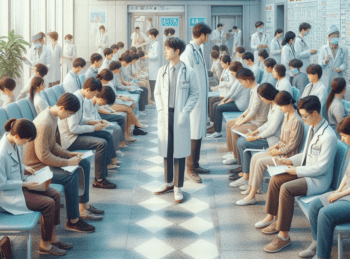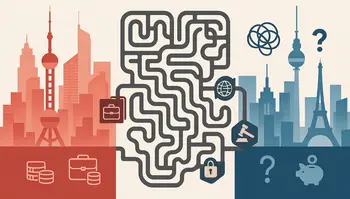
China’s healthcare system has undergone remarkable transformations over the past few decades, evolving from a basic and underdeveloped structure to one that aspires to provide comprehensive and accessible care for its vast population.
This post explores the historical development, current structure, challenges, and future prospects of healthcare in China, while also addressing patient experiences, reforms, and innovations shaping the system.
Historical Background
Before 1949, China’s healthcare system was rudimentary, with limited access to medical services and a high prevalence of infectious diseases.
Life expectancy was just 35 years in 1949, reflecting the dire state of public health.
The establishment of the People’s Republic of China marked the beginning of significant improvements, as the government prioritized disease prevention and eradication.
Campaigns targeting diseases like smallpox, malaria, and schistosomiasis were highly successful, contributing to a dramatic rise in life expectancy to 77.4 years by 2022 (source).
The healthcare system has since evolved, transitioning from a centrally planned model to a more market-oriented approach, particularly after the economic reforms of the 1980s.
Today, China is striving to balance public and private healthcare services while addressing the needs of its aging population.
Structure of the Healthcare System
China’s healthcare system is organized into three tiers, designed to provide care at different levels of complexity:
- Primary Care: Village clinics and township health centers form the backbone of rural healthcare, offering basic medical services, preventive care, and health education. However, these facilities often face resource shortages and a lack of qualified personnel.
- Secondary Care: County hospitals provide more specialized services, including diagnostics and treatment for more complex conditions. They serve as a bridge between primary and tertiary care.
- Tertiary Care: Large urban hospitals, often affiliated with medical universities, offer advanced treatments and cutting-edge medical technologies. These facilities are typically overcrowded, as patients from across the country seek care here due to the perceived higher quality of services (source).
Health Insurance Schemes
China has achieved near-universal health coverage, with over 95% of the population enrolled in one of its public insurance programs (source).
These include:
- Urban Employee Basic Medical Insurance (UEBMI): Mandatory for urban residents with formal employment, funded by payroll taxes from employers and employees.
- Urban-Rural Resident Basic Medical Insurance (URRBMI): Covers urban residents without formal jobs and rural residents, funded by government subsidies and individual premiums.
While these schemes cover a wide range of services, including hospital care, prescription drugs, and traditional Chinese medicine (TCM), they come with deductibles, copayments, and reimbursement ceilings.
Notably, there is no annual cap on out-of-pocket spending, which can lead to significant financial burdens for patients with chronic or severe illnesses (source).
Challenges Facing the Healthcare System
Despite its progress, China’s healthcare system faces several pressing challenges:
1. Aging Population
China’s population is aging rapidly, with over 20% of citizens expected to be aged 60 or older by 2035 (source).
This demographic shift is driving demand for chronic disease management, long-term care, and geriatric services, straining the healthcare system.
2. Rural-Urban Disparities
Healthcare access and quality vary significantly between urban and rural areas.
For example, urban areas have 3.6 doctors per 1,000 people, compared to just 1.8 per 1,000 in rural regions (source).
Rural residents often travel long distances to access advanced medical care, exacerbating inequities.
3. Rising Healthcare Costs
Healthcare spending in China reached 6.5% of GDP in 2022, up from 5% a decade earlier (source).
While this is lower than in many developed countries, the rising costs are a growing burden for both the government and individuals.
Out-of-pocket expenses remain high, particularly for advanced treatments and medications.
Reforms and Innovations
To address these challenges, the Chinese government has implemented several reforms and embraced technological innovations:
Key Reforms
- Integration of Urban and Rural Insurance Schemes: By merging urban and rural health insurance programs, the government aims to expand the risk pool, reduce administrative costs, and improve equity (source).
- Strengthening Primary Care: Investments in village clinics and township health centers aim to reduce the reliance on overcrowded tertiary hospitals.
- Cost Control Measures: Efforts to regulate drug prices and hospital fees are ongoing, with mixed results.
Innovations
- Telemedicine: Platforms like Ping An Good Doctor and WeDoctor are expanding access to medical consultations, particularly in remote areas. By 2023, over 50 million people had used telemedicine services in China (source).
- Artificial Intelligence (AI): AI is being used for diagnostics, treatment planning, and personalized medicine. For example, AI-powered tools are helping detect diseases like cancer and diabetic retinopathy with high accuracy (source).
- Electronic Health Records (EHRs): The implementation of EHRs is improving care coordination and reducing medical errors, though adoption remains uneven across regions (source).
The Role of Traditional Chinese Medicine (TCM)
Traditional Chinese Medicine remains an integral part of China’s healthcare system, with over 40% of outpatient visits involving TCM treatments (source).
The government actively promotes TCM as a complement to modern medicine, funding research and integrating it into public insurance schemes.
However, TCM’s efficacy and safety remain topics of debate, particularly in the international medical community.
Patient Experience and Public Health Campaigns
Patient Experience
Patients in China often face long wait times, particularly at tertiary hospitals, where demand far exceeds capacity.
Surveys indicate that over 60% of patients prefer seeking care at large urban hospitals, even for minor ailments, due to concerns about the quality of care at lower-tier facilities (source).
Public Health Campaigns
China has launched several successful public health initiatives, including:
- Anti-smoking Campaigns: Smoking rates among men have declined from 63% in 1990 to 50% in 2020, though challenges remain (source).
- Infectious Disease Control: The COVID-19 pandemic highlighted China’s ability to mobilize resources for disease prevention, though it also exposed gaps in transparency and communication (source).
Future Prospects
China’s healthcare system is poised for further transformation, with continued investments in technology, infrastructure, and workforce development.
Key priorities include:
- Expanding access to primary care in rural areas.
- Addressing the needs of the aging population through long-term care facilities and home-based care.
- Enhancing the affordability of healthcare by capping out-of-pocket expenses.
While challenges like rural-urban disparities and rising costs persist, China’s commitment to innovation and reform offers hope for a more equitable and efficient healthcare system.
As it continues to develop, China’s experience provides valuable lessons for other nations striving to achieve universal health coverage.
Conclusion
China’s healthcare system has made remarkable strides in improving access and quality of care for its population.
However, significant challenges remain, particularly in addressing disparities and managing costs.
With ongoing reforms and a focus on innovation, the future of China’s healthcare system looks promising, offering a potential model for other developing nations.


